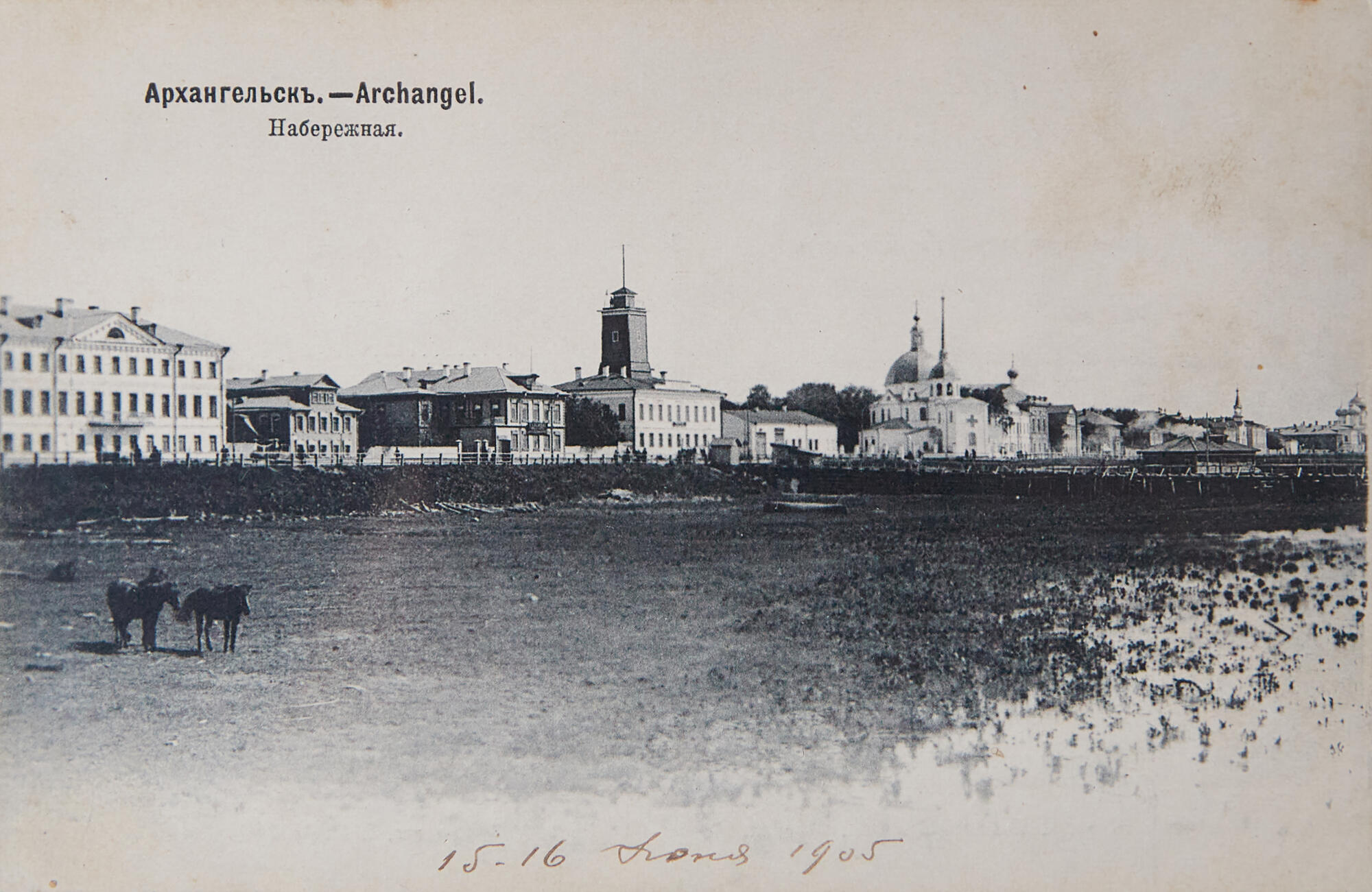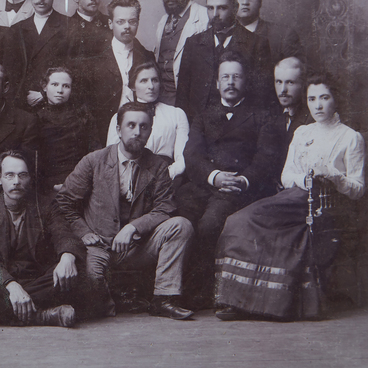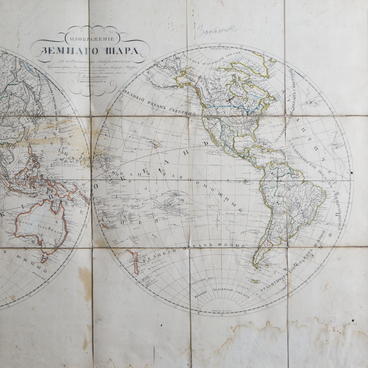The exhibition features an early 20th-century postcard with a view of Arkhangelsk. Arkhangelsk is the largest northern city in the European part of Russia. It is situated at the mouth of the Northern Dvina River, 30–35 kilometers from where it enters the White Sea.
The city was founded by decree of Ivan the Terrible as a settlement around the Mikhailo-Arkhangelsk Monastery. In 1584, the traditional founding date of the city, the governors “in one year… put a city around the Arkhangelsk monastery”, as well as a small fort. The settlement was named Novokholmogory. A pier was built on the Dvina bank opposite the fortress. In the late 1580s, the settlement of Novokholmogory became the center of Russian foreign trade, which was quite profitable for the state.
As trade flourished, the city developed. In the second half of the 17th century, the thriving international trade led to changes in the traditional structure of the medieval Russian city, as it was known during the first century of its existence. The port was then its center, and the city built its own fleet. The former center — the wooden fort — lost some of its administrative functions, since the command moved from the wooden house to the “stone city”. In the late 17th and in the 18th century, Arkhangelsk was growing along the Dvina River.
In the late 19th and early 20th century, Arkhangelsk became the country’s largest timber industry and export
center. The city also played an important role in exploring the Arctic and
establishing navigation along the Northern Sea Route. More than two hundred
polar research expeditions started in the port of Arkhangelsk, including ones
led by Vasily Chichagov, Fyodor Litke, Vladimir Rusanov, Pyotr Pakhtusov, and
Georgy Sedov. In 1915, an icebreaking bureau opened under the management of the
Arkhangelsk Commercial Port. The organization included 13 icebreaker ships,
which started the icebreaker fleet. In winter, the icebreakers accompanied
ships from the White Sea Throat strait to Arkhangelsk. During the First World
War, a huge amount of military cargo from the Entente Powers was delivered to
the port of Arkhangelsk. In 1916, the seaport of Murmansk was founded on the
shore of the ice-free Kola Bay. Over time, fish processing and ship repair
enterprises moved there, and Arkhangelsk lost its uniqueness and significance
as the main northern port.


